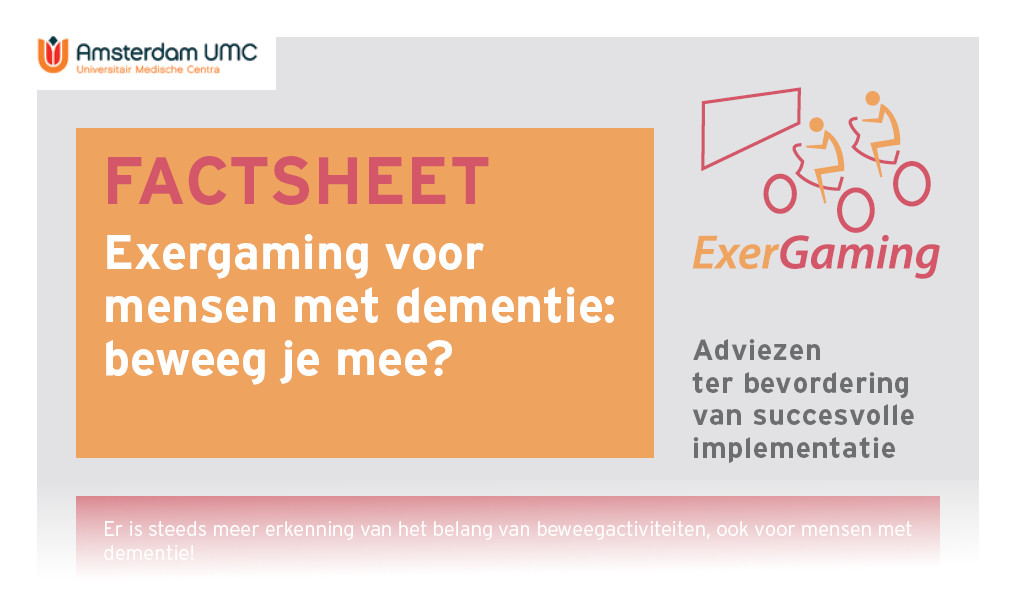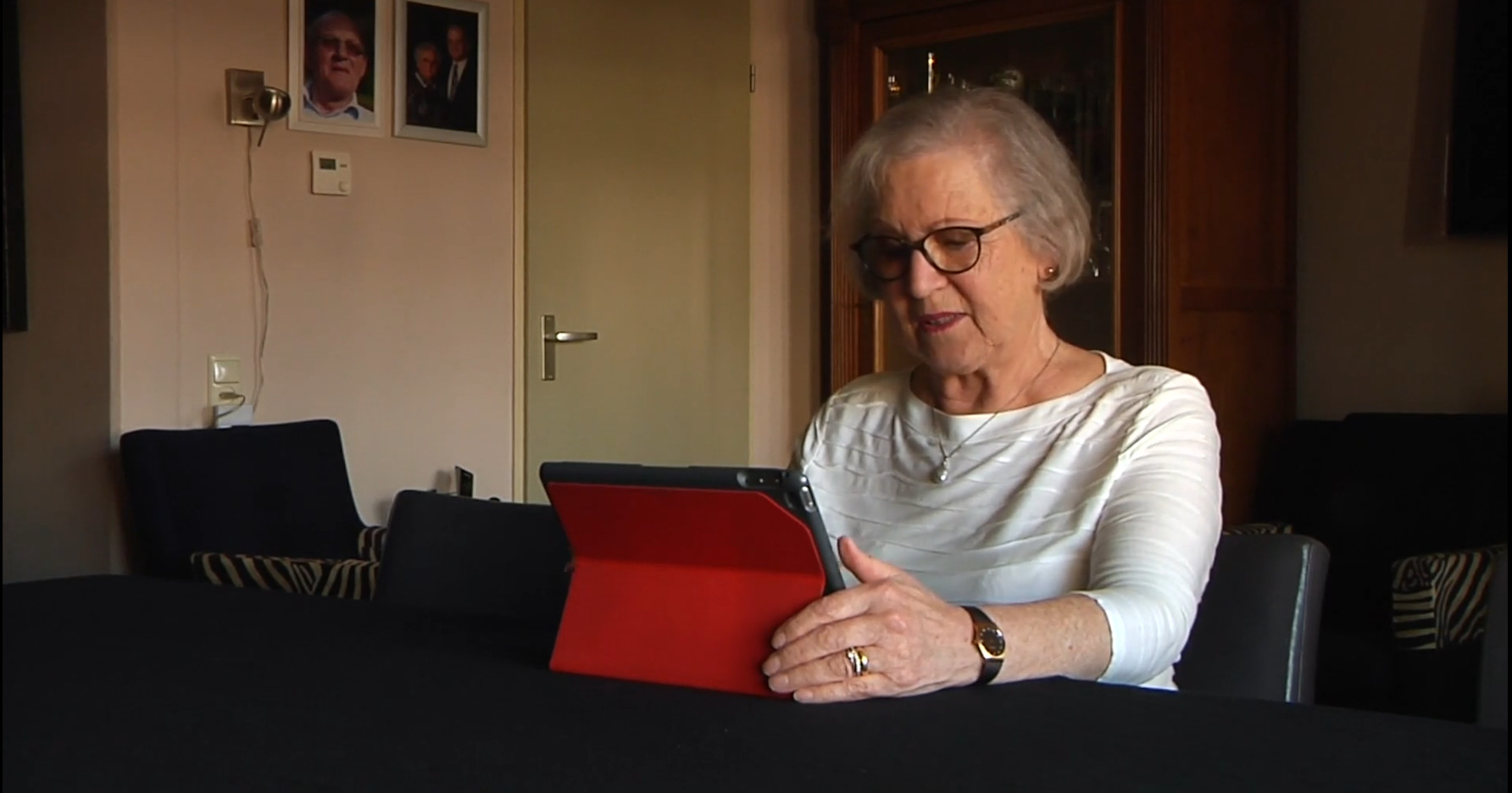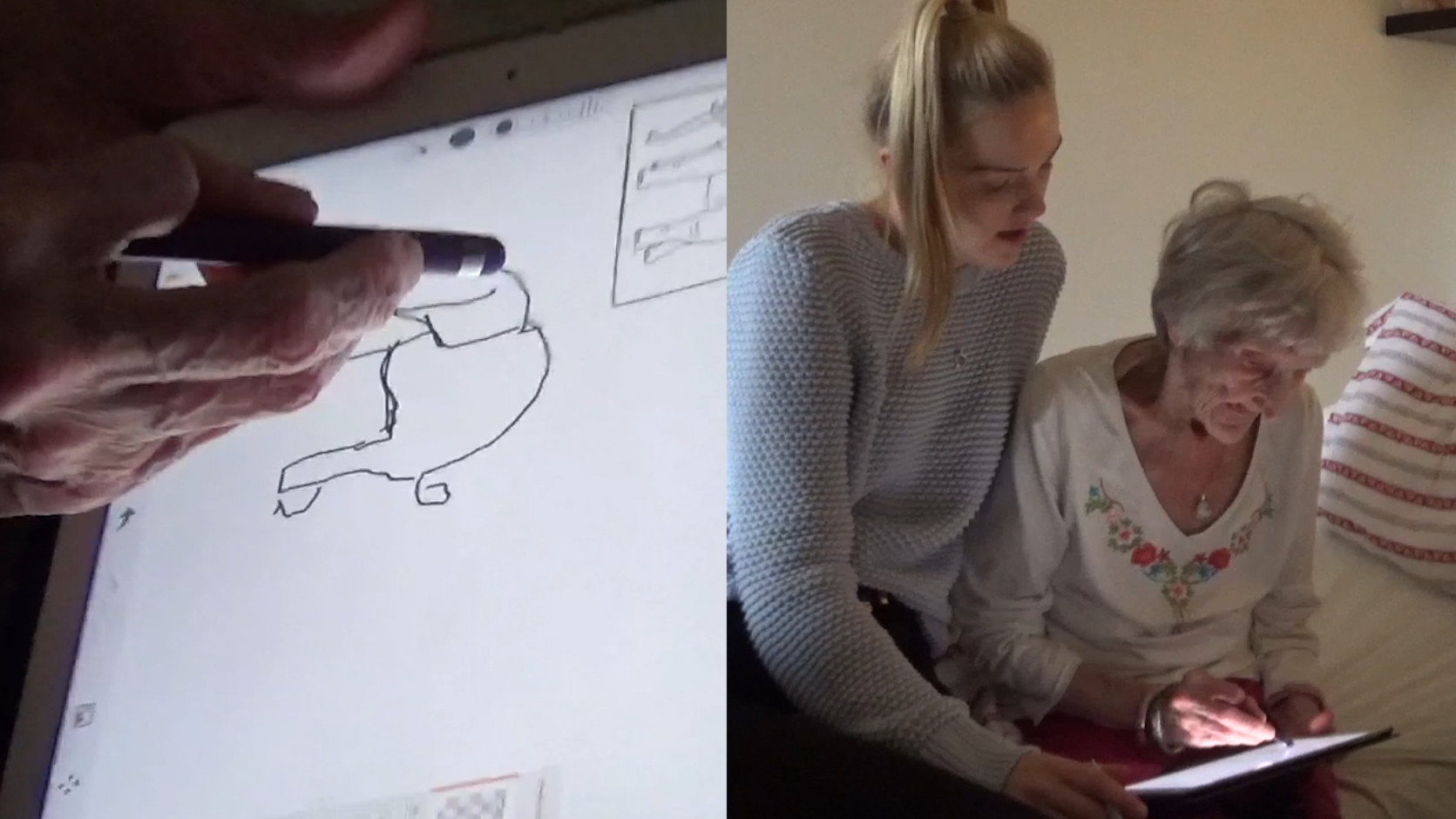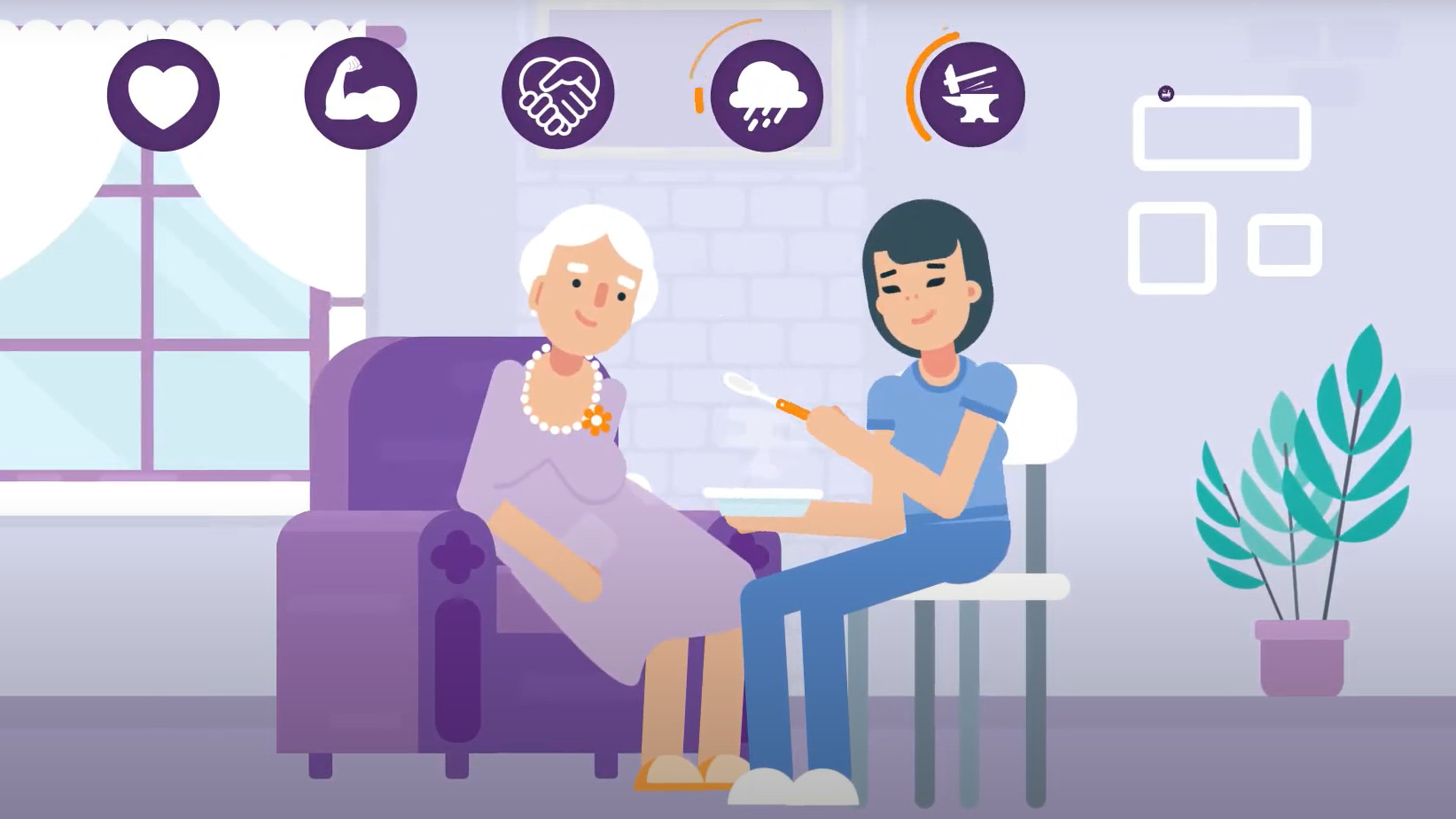Technology for meaningful activities
Guidance
Exergaming in day care centres can be implemented more successfully by making more than one employee responsible for it.
Explanation and examples
We have asked day-care centres for people living with dementia, which factors were important for successful implementation of Exergaming. Sometimes, only one person in the day-care centre was responsible for the Exergaming activity. If this person was not at the day-care centre, because he/she was ill or left for another job, the Exergaming activity often was forgotten.
Read more >
Guidance
Employees of care organisations should be supported by the management in their responsibility for Exergaming as a new activity. Managers should be actively engaged in Exergaming and be kept updated on any developments with regard to Exergaming (i.e. positive experiences of people with dementia practising Exergaming, any potential issues with the activity).
Explanation and examples
We have asked day-care centres for people living with dementia, which factors played a role in successful implementation of Exergaming. The staff of these day-care centres sometimes did not feel supported by the management in supervising and implementing the Exergaming activity. This made it less likely for them to implement it.
Read more >
Guidance
Introduce new application (app) technology to a person with dementia by focusing on aspects that are likely to encourage their interest, such as family photographs, video calls with friends and family, music, games, or art applications.
Explanation
This guidance is based on a review of the literature on the use of touchscreen technology by people with dementia and carers.
Read more >
Guidance
Internet should be freely available in care homes so residents with and without dementia can have access to online resources (e.g.social media, entertainment, information).
Evidence
The multi-country survey indicates that it is not common for the residents to have access to the internet in care homes, with the internet use restricted to the staff. This means that many social and leisure activities based on ICT will be inaccessible for people with dementia, depriving them of enjoyable, meaningful activities and social networks.
Read more >
Guidance
To develop an eHealth intervention for caregivers of people with dementia that will be used in practice, developers should investigate the needs of the target population (people with dementia and their caregivers), and the needs of the people who will be implementing these interventions after a trial phase (such as case managers, hospital workers, volunteers or professionals associated with advocacy groups).
Explanation and examples
A systematic search was conducted into the implementation of studies including the terms ‘dementia’, ‘eHealth’, and ‘caregivers’. 2524 abstracts and 122 full texts were read, resulting in 46 studies meeting all criteria. Containing 204 statements on implementation. Most implementation statements could be grouped into 2 main themes: ‘Determinants associated with the eHealth intervention’ and ‘Determinants associated with the caregiver’. Very few statements were in the themes ‘Determinants associated with the implementing organization’ and ‘Determinants associated with the wider context’. Absence of knowledge on the contextual environment creates significant difficulties for health system planners and implementers who aim to translate these interventions into practice.
Read more >
Guidance
To ensure that the eHealth interventions for caregivers of people with dementia will continue to be available, supported, updated and compatible with changing software and hardware requirements, financing and business plans should be developed from the beginning.
Explanation and examples
A mixed-methods study followed up on the 12 publications included in Boots et al.’s (2014) widely cited systematic review on eHealth interventions for informal caregivers of people with dementia, to explore implementation into practice. Publicly available online information, implementation readiness (ImpRess checklist scores), and survey responses were assessed. The majority of survey respondents identified commercialization and having a business plan as facilitators to implementation. There was little evidence for any of the 12 applications being put into practice.
Read more >
Guidance
Ensure new technology is compatible with a range of relevant platforms to promote implementation.
Explanation and examples
Findings from the feasibility trial showed that people with dementia use a range of devices with various software versions (e.g. smartphones, touch-screen tablets, and personal computers) to access apps and other services. New technology which aims to be compatible with these different devices, can lead to increased uptake and may contribute to successful implementation.
Read more >
Guidance
To deliver more efficient self-help and technology-based psychological interventions to informal caregivers, time flexibility and personal retention approaches should be considered to prevent a high rate of dropout. Flexible timing (i.e., self-paced instruction) and personal retention approaches, such as embedding a component of social support/interaction in the form of informational support (e.g., guidance) and/or emotional support (e.g., peer support), showed lower attrition and higher rates of engagement and satisfaction in various self-help and technology-based psychological interventions for informal caregivers.
Explanation and Examples:
A systematic search was conducted into the use of psychological interventions based on acceptance and commitment therapy for informal caregivers of people with dementia or other long-term or chronic conditions. A total of 7896 abstracts and 33 full texts were read, resulting in 21 studies involving a narrative synthesis. Quantitative and qualitative data showed that flexible interventions are more amenable to caregivers’ lives. Further, social or interpersonal support in various modalities (e.g., automated messaging, reminders, personal touch) might promote motivation for, uptake of and engagement in interventions. Therefore, future technology-based interventions, particularly in the form of self-help that requires little or no therapist resources, might benefit from time flexibility and embedded social support components (e.g., peer support or motivational coaching). Furthermore, employing mixed methods or embedded qualitative components. (e.g., semi-structured interviews) might provide further insight into user experience, potentially supporting decisions related to intervention design. Uncovering and preventing factors associated with high rates of dropouts will lead to more effective, adaptive and individualised interventions.
Read more >





